Many travellers define Namibia as an unique pearl on Earth.
Indeed, the haunting beauty this South-African expanse has to offer is immense. If you think Namibia, think to an unending variety of espectacular landscapes. Think to shocking breathtaking views. Think to countless colorful shades of deserts and pure natural marvels behind every corner.
In this page, I want to show you what I believe are the most precious, heartwarming and not-to-be-missed sceneries this magic country has to offer.
1. The Big Daddy (Sossusvlei)
The Namib Desert is the oldest desert in the world and the “Big Daddy”, with its 325 meters, is surely the most iconic and magnificent dune of all.
This dune is located within the Namib-Naukluft National Park, 65km from the entrance of Sesriem (the only gate to the national park which opens at sunrise). Climbing the Big Daddy is an experience worth the whole trip to Namibia and definitely my favourite highlight of our road trip.
How to get there
Important to note before diving deep into this beauty, is that due to the torrid temperature that the desert reaches during the day-time (can easily peak over 40°C), the visit to Sossuvlei, Deadvlei, and Big Daddy must be done just after sunrise when the sand is still cold and the sun still humanly-bearable. Said that, let’s start with how to get there.
The road inside the park is well-maintained and mostly paved, with one exception: the last 5kilometers (where only 4×4 cars can access) which are entirely in deep-sand. Traffic is almost non-existent, but the path will still take you quite some time to navigate.
If it’s your first time driving on sand, it may be slightly hard and perhaps stressful, but trust me it’ll also be an extremely entertaining experience 😉 If you’re unsure about driving in Namibia, we suggest you to check out our Namibia: Travelling with a Camping Car article for in-depth safety driving tips.
Red and black dunes, like gentle giants, will accompany you on your way while growing larger and larger the closer you get to your destination. Wildlife presence is not too abundant like in other parts of Namibia but it’s relatively easy to spot ostriches or gemsboks along the way.
Overall, driving the road from the Sesriem entrance to the parking in front of the Sossusvlei (a salt and clay pan at the feet of the Big Daddy) took us slightly more than one hour, and honestly, just the road alone is worth the entrance cost (250NAD – 12 Euro).
Once out of the car, it will be impossible taking your eyes off from it: the “Big Daddy”! Climbing the Big Daddy is a feat of strength and reaching the very top definitely requires good physical conditions, but also smart planning.
Wear light and comfy, be sure to be covered with suncream and bring at least two liters of water per person. The dry climate makes it hard to breathe. Climbing in deep sand is strenuous, your feet will sink every step of the way.
We found going barefoot the less tiring option to ascend the dune. Feeling the sand under the feet also increases the immersion and the majestic feeling of the place.
Don’t forget to bring shoes (and socks!) with you in your backpack as you may need them on your way back if the sand will start burning later in the day (when we were there, at 10.30a.m. in the morning it became unbearable but luckily we were almost at the end of our visit).
The climb took us more than one hour and liters of sweat. Still, once on top, the effort is paid back thousand-folds.
The 360° top-view over the colossal and uncontaminated Namib desert is something that leaves you speechless as words fade in front of such natural magnificence. The sight of the unending dunes until the far-end of the horizon is like a statement from nature claiming its uncontested territory. I was truly mesmerized by such beauty.
Although there may be more than a hundred people visiting Sossuvlei every day, not many reach the top of Big Daddy and there’s a high chance you’ll enjoy a lot of time on the edge alone with no one around you.
Last but not least, the descent from the Big Daddy will likely be the funniest experience you’ll have in Namibia. To come back, we decided to run straight down the steep side of the dune into the Deadvlei laying at the bottom; it took us less than 5 minutes.
Don’t be scared of the speed or the steepness. The sand is soft and there’s no risk to get hurt or creating avalanches. Just let yourself free and run down at full speed; enjoy it at its fullest as it is likely a once in a lifetime experience.
Hereafter I leave a short video of me and my sister descending the Big Daddy 😉
All in all, reaching and climbing the Big Daddy is a hard but extremely rewarding experience, and (I will never stress it enough!) you should definitely make some space for it on top of your bucket list.
2. Deadvlei
Once run-down from the Big Daddy, we immediately find the next Hotspot of our list: the Deadvlei (yes, it’s so close!).
The Deadvlei (the name means “dead marsh”) is a white clay pan enshrined between the red dunes of the Namib-Naukluft National Park which is believed to have formed thousands of years ago due to the flooding of the ephemeral river Tsauchab.
The ponds of shallow water at the time allowed camel thorn trees to flourish. Subsequently, due to a change of climate, the drought-hit the area, and dunes closed-off the pan from the river, leaving it to dry.
The last remaining trees that you can see in the pan are believed to have died around 800 years ago. Although all dead, the trees do not decompose because the environment is too dry. Their black color comes from the scorching Namibian sun that shined on them for centuries.
Walking through the Deadvlei pan is a surreal, almost otherworldly experience: the contrast between the red dunes, the white pan, and the black trees makes this place hauntingly breathtaking and close to what you would imagine an extra-terrestrial planet to be.
Walking the pan back to the car park takes around 20 minutes, but reserve a bit more time for that urge of taking photos will eat you from inside. Truth is, that this place is so full of wonder that photos don’t give it enough credit.
As a final point, it is important to note that touching or climbing on the trees is extremely forbidden and, although nobody is there to enforce the rule, it is to be considered disrespectful and plain stupid behavior (some tourists still do, please don’t!).
The ancient trees of Deadvlei are extremely weak and frail, so it’s important to admire them but also to preserve them for future visitors.
3. Etosha National Park
(photo credits to: Sergi Ferrete).
Here we are in the north-west of Namibia, in the shrine of nature and a must-visit for safari lovers and photographers alike: the Etosha National Park.
The Etosha reserve has been established in 1967 and, with a whopping area of over 22.000 square kilometers, is one of the largest and most incredible wildlife-viewing venues in the world.
Here, reside more than 100 species of mammals between which we find lions, elephants, leopards, gemsbok, zebras, giraffes, and the endangered black rhinos, and many more.
Etosha is a fascinating place, no doubt about it, but is not an average safari.
First of all, the park is not an African savannah. The area of the park is mostly desertic, with the Etosha salt pan covering over 20% of the total reserve area. Forests are rare and are never too thick.
When you enter the park from one of the southern roads you’ll be asked to pay a fee of 80NAD/day (5Euro/day) for every adult. If you plan to stay more than a day, you will receive a paper to show when you check-in in your camping area (the entrance fee is in addition to the cost of the camping).
Within the Etosha National Park, there are 6 campgrounds where you could stay overnight: Okaukuejo, Halali, Namutoni, Dolomite, Olifantsrus, and Onkoshi. These tiny villages have walls to protect you from wild animals and open their gates only during the day time sunrise to sunset (camping in the wild is dangerous and totally forbidden).
While driving in the park you better never leave your vehicle, as predators could be hidden anywhere.
In the case of need (ex. toilet needs or any other reason) on the park’s roads, there are few caged-grounds (you may have to drive more than 50km to find one) where you can enter with your car and the safety nets will make you safe (getting down from the car just to open and close the gates can be alone pretty scary).
We entered Okaukuejo and set this tiny village as our camping base. The camping prices are between 330-390NAD (20-24Euro) x adult/day (depending on the season). If you’re following our suggestion and coming with your own tent-car you’ll be able to save quite some money (the alternative to camping are only more expensive chalets).
The camping facilities included in the price at Okaukuejo are a spot to park your tent-car, a water-tap (useful for washing dishes/clothes), a small light for the night, and a barbeque (one of the highlights of camping in Namibia, there’s always a bbq!).
Furthermore, you can use the site’s toilets and showers, always maintained sufficiently clean. A restaurant with Wi-fi coverage (for a small fee) is also available close to the main square.
As said before, the gates of the campgrounds open and close with the sun, so driving in the park is allowed only during the day-time. And here we come to what makes Etosha truly special: waterholes!
In Etosha, you can spend hours driving through the desert, and with perseverance, you’ll find animals also on your way. Still, the easiest way to see wildlife in Etosha (and more enjoyable) is not going to the animals but simply wait the animals will come to you!
Let me explain it better. Because Etosha being a huge desert covered by scarce vegetation, animals re-unite around waterholes to satisfy their thirst. Simply staying still, around those ponds (in your car if you’re within the park, or sitting on a comfy bench if you’re within one of the campings) will ensure you to spot hundreds (!!) of animals of any kind.
Animals come in herds, so often when one herd leaves, a different one is already moving toward the waterhole.
The chance this place offers of enjoying your cold beer in the middle of nowhere from your safety cage while watching the life of wild nature flowing is just pure bliss. The feeling of you being caged within animals’ territory and not the opposite is something strange but also quite adrenaline-filled.
We stayed in Okaukuejo for 3 days (4 nights) and I felt it was a fitting amount of time to see what Etosha had to offer, Overall, visiting the park feels like being inside a National Geographic documentary. So now you know, if you go to Namibia, be sure to make enough space for it!
4. Swakopmund & the Skeleton Coast
(photo credits to Grant Durr)
If you’re driving from Sossusvlei to Etosha or the opposite, having a stop in Swakopmund for a couple of nights can be an excellent option for refilling your fridge with food, getting some rest in a normal bed, or just because the Namibian coast is so straight-out beautiful.
Swakopmund is a small coastal town of slightly more than 40.000 people, founded in 1892 by German colonists (when you’ll see the artsy buildings style and the perfectly squared crossroads you could almost guess it!).
What are the best attractions in Swakopmund?
Within the village, the city museum is a cool one-hour visit to learn more about the history of the area and the current way of living of its population; here you’ll see the machinery that you won’t believe it ever existed, it is truly a jump in time!
The coast and beach are good places to stroll around and take some sunbathing break but beware of high waves and scammers walking by. Moreover, Swakopmund is a hub for activities: you can rent quads or bikes and explore the nearby desert, join whales and dolphins-watching tours or even join a Skydive Tandem.
Me and my sister loved spending a couple of days in this village to take a break from the camping life and, if you got time on your schedule, we would definitely recommend you give it a look! 😉
5. Namibian Starry Night Sky
(photo credits to: Jonatan Pie).
The last unbelievable beauty on this list is not exactly a hotspot to reach; it is not one single place but it’s many!
If you’re planning your trip to Namibia, don’t forget to take your time to tenjoy one of the most stunning wonder nature has to offer: a clear, luminous and pulsing starry sky.
Scarse population means lower levels of air and light-pollution, which in turn make night skyes clear and bright.
Our suggestion for you, is to park your tent-car for at least couple of nights in campings off the beaten track. Check out in internet and you’ll find many not too far from the main connection roads.
On our journey, we stayed three nights 40-mins outside of Sesriem in a camping called Neuhof Portion 2 (we found it on booking very cheap) and we were the only people staying in the whole site. Useless to say, that every time night fell, the sky was overwhelming.
I saw many night skyes during my travels, on all continents; but I have never seen stars pulsing like in this place. Really, the sky felt alive, it was moving! The quantity of stars in front of my eyes was overwhelming and the intensity of their light mesmerizing. I could not believe my eyes!
The Namibian night sky is a vision that lasts forever and will follow you during your whole trip, so be ready to get the best out of it!
Conclusion
Did you like my article and found it useful? Do you have any question or would you like to leave further information?
Leave a comment below and let’s get in touch! 🙂
Namibia Travel Guide
Content Summary
2) Namibia: Travelling on a 4×4 Camping Car
3) Namibia: The Best 5 Places you Need to Visit
Namibia: 6 Truly Life-Saving Tips
Wilderness is the haunting beauty but also the hidden danger of Namibia. Crossing deserts with no human soul in sight is not a walk in the park and you better be well prepared to avoid unpleasant surprises. In this article I share with you 5 Life-Saving Tips to make...
Namibia: Why a Roadtrip?
Let's Namibia! Discovering the vast and uncontaminated sceneries this precious land has to offer is an experience that lasts for a lifetime no matter what'll happen on your way. To be sure enjoyed at its fullest though, it's better to throw in some time for smart...
Namibia: How to Self-Drive?
Dust, Deserts and Pulsing Stars. The magic of loneliness has never been so charming. Namibia, the least densely populated country in the world, is a place where nature still reigns supreme. Glowing red dunes, majestic safari landscapes, and deserts of every color are...
Namibia: Travelling on a 4×4 Camping-Car
Being it your first time or no, travellng with a camping car it's always a new experience. In this article I thought of leaving you some pieces of advice on choosing the car, driving and camping which I hope will make your journey through the deserts of Namibia much...


















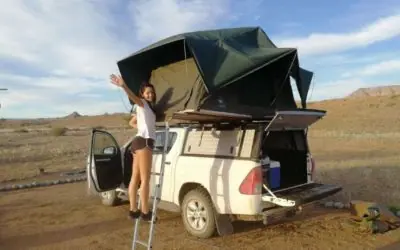
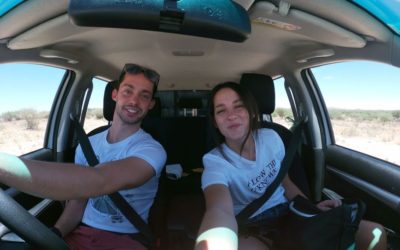
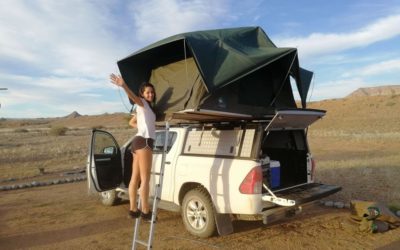
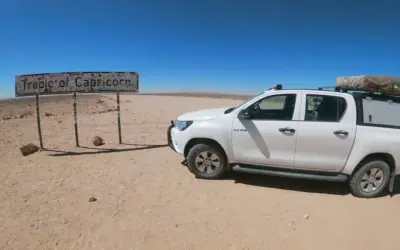
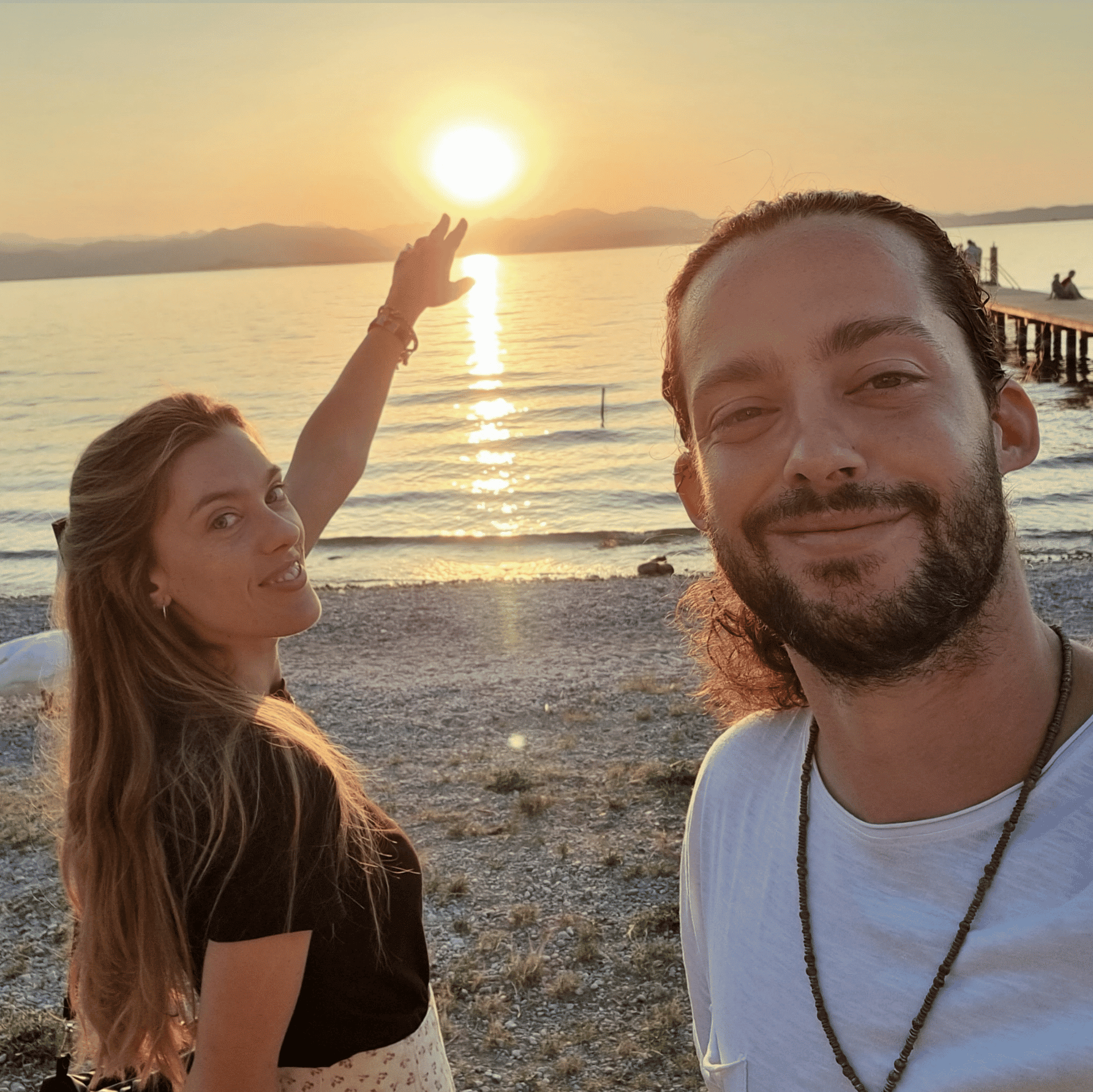
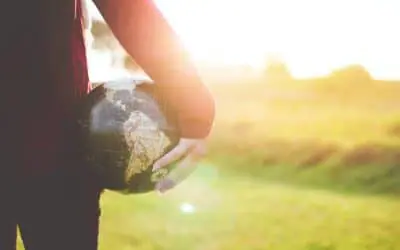

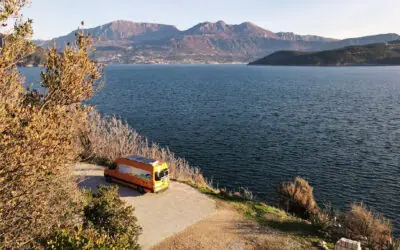
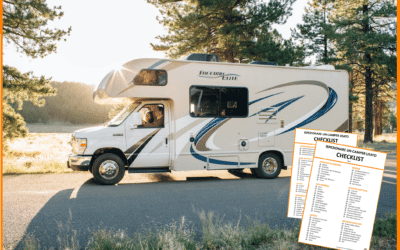
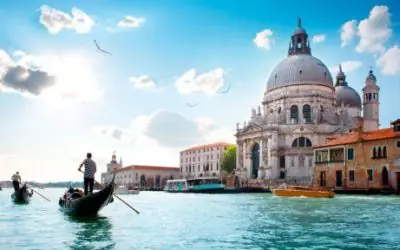

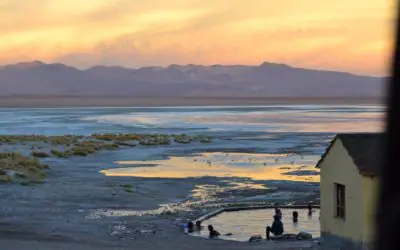
0 Comments